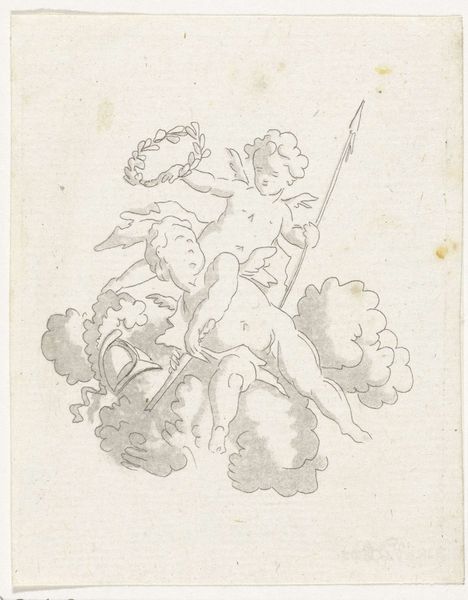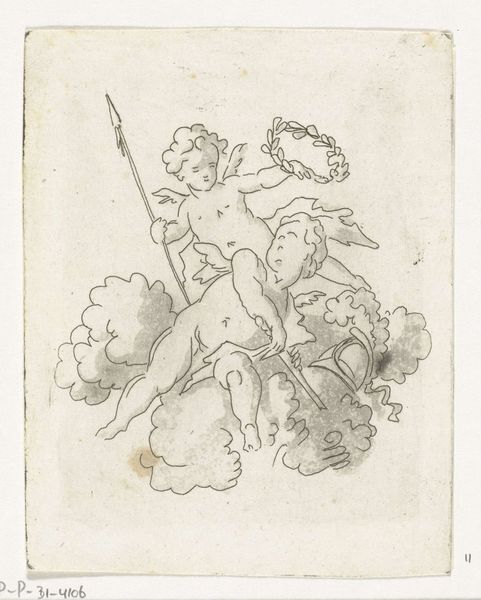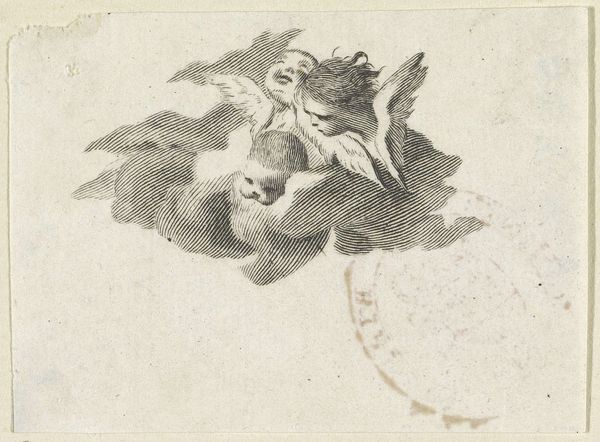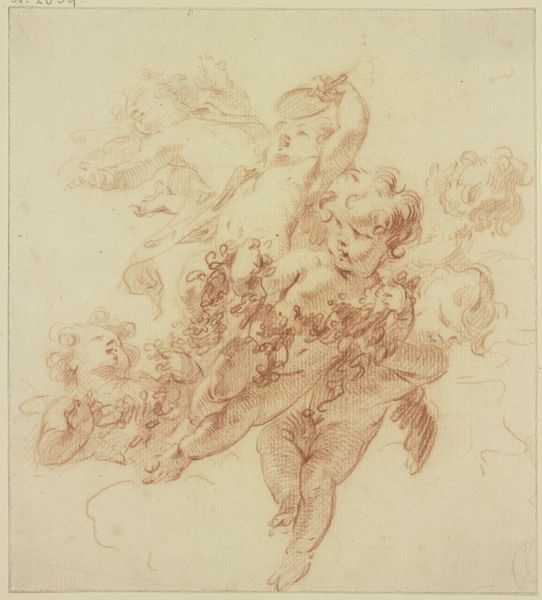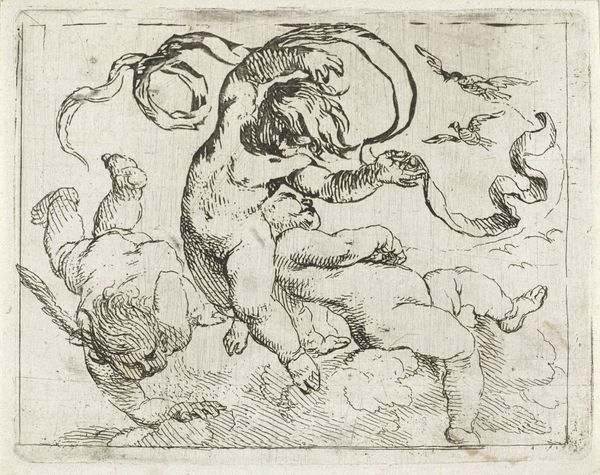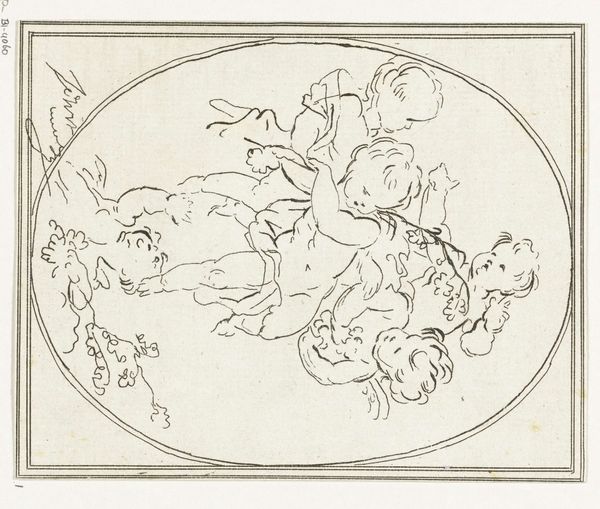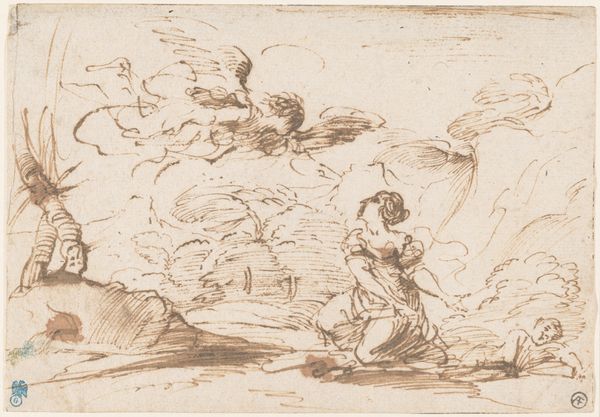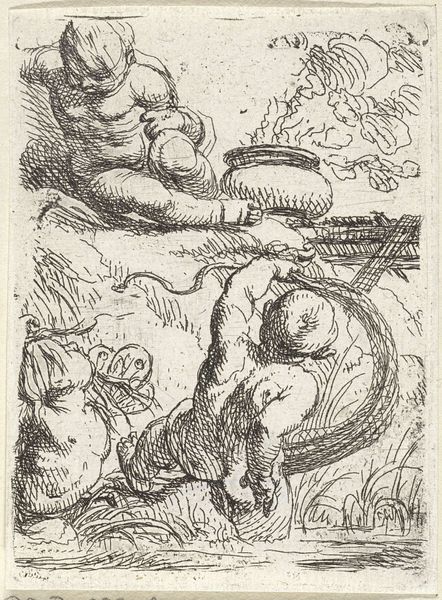
drawing, ink
#
drawing
#
neoclacissism
#
ink drawing
#
figuration
#
ink
Dimensions: height 105 mm, width 85 mm
Copyright: Rijks Museum: Open Domain
Editor: Here we have "Twee putti," an ink drawing by Anthonie van den Bos, made sometime between 1778 and 1838. There's an interesting use of line to create soft forms... What strikes you about this piece? Curator: What I find compelling is how this seemingly simple Neoclassical drawing actually reflects broader societal anxieties about idealised forms and power structures. These putti, symbols of innocence and beauty, are presented with instruments of both war – a spear – and celebration – a laurel wreath. Do you think that this juxtaposition might be deliberate? Editor: It does seem intentional, yes. The putto with the spear appears almost to be falling, or perhaps being pushed, while the other is holding the wreath as though in offering or victory. I suppose I had not considered it in this light, more as decorative. Curator: Think about the socio-political climate of the time, a period punctuated by revolution and the rise and fall of empires. Could this image, then, be interpreted as a subtle commentary on the precariousness of power and the fleeting nature of triumph? What about its themes resonating with contemporary dialogues surrounding social justice and historical narratives? Editor: That makes me think about the institutions that these symbols traditionally served; the putti could also represent a critical look at the colonialist ideologies. It’s not something I immediately picked up on but it gives the work greater depth. Curator: Exactly! By engaging with the historical context and theoretical frameworks, we can reveal hidden meanings within seemingly straightforward images. Editor: I will certainly look at art from this era in a new light now. Thanks!
Comments
No comments
Be the first to comment and join the conversation on the ultimate creative platform.
